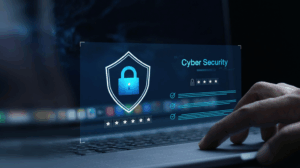The digital landscape is undergoing a relentless transformation, driven by interconnected technologies, pervasive cloud adoption, and the explosive emergence of Artificial Intelligence (AI). As our lives, economies, and critical infrastructure become inextricably linked to the digital realm, the role of cybersecurity has shifted from a mere IT function to a cornerstone of national and corporate resilience. The future of cybersecurity is defined by a dynamic arms race, where innovation is as much a weapon for defenders as it is for the sophisticated adversaries who seek to exploit the expanding attack surface.
This article explores the major trends, challenges, and strategic shifts shaping the defense of our digital world, moving beyond traditional perimeter-based models toward a philosophy of pervasive vigilance and automated resilience.
The Evolution of the Threat Landscape
The adversaries of tomorrow will be smarter, faster, and more evasive, largely due to their own weaponization of advanced technology. The current threat landscape is already a complex battlefield, but several key areas signal the escalation to come:
- AI-Enhanced Attacks: Generative AI (GenAI) is a double-edged sword. While it’s an invaluable tool for threat detection, it also democratizes sophisticated cybercrime. Attackers are using GenAI to create hyper-realistic phishing campaigns, write highly effective polymorphic malware that constantly mutates to evade detection, and automate reconnaissance at an unprecedented scale.
- The Quantum Threat: Although still nascent, the specter of quantum computing looms large. A sufficiently powerful quantum computer could break current public-key encryption standards, rendering much of today’s secure communication and stored data vulnerable. The race to develop and implement Post-Quantum Cryptography (PQC) is a critical mandate for governments and financial institutions to future-proof their most sensitive data.
- Supply Chain Vulnerabilities: Attacks targeting software supply chains—like the infamous SolarWinds breach—have proven that compromising a single, trusted vendor can provide backdoor access to thousands of organizations. Future cybersecurity strategies must place a heightened focus on third-party risk management and establishing trust throughout the entire digital ecosystem.
- Cyber-Physical Convergence: As the Internet of Things (IoT) and Operational Technology (OT) integrate with corporate networks, the attack surface expands into the physical world. Hacking a hospital’s network can now mean disrupting patient care; compromising an energy grid can lead to blackouts. Protecting these cyber-physical systems is a paramount challenge for resilience.
The Pillars of Future Defense
To counter these evolving threats, the security industry is undergoing a fundamental paradigm shift, focusing on three core architectural philosophies: Zero Trust, AI-Driven Defense, and Cyber Resilience.
1. Zero Trust Architecture (ZTA): The New Default
The traditional security model—trusting anything inside the corporate network—is obsolete in a world of remote work and multi-cloud environments. Zero Trust is rapidly becoming the gold standard, operating on the foundational principle of “never trust, always verify.”
- Pervasive Verification: Every user, device, application, and workload must be authenticated, authorized, and continuously validated before being granted access, regardless of their location (inside or outside the corporate perimeter).
- Micro-segmentation: Networks are broken into small, isolated zones, limiting an attacker’s lateral movement within a network even if a single endpoint is compromised.
- Contextual Access: Access decisions are dynamic, based on a wealth of real-time data, including user behavior, device health, location, and the sensitivity of the data being requested. ZTA is no longer a “nice to have”; it is the essential blueprint for a secure, distributed enterprise.
2. The Rise of Defensive AI and Automation
The sheer volume of security alerts generated daily exceeds the capacity of human analysts. AI and Machine Learning (ML) are essential for operating at the speed and scale required to keep up with automated attacks.
- Predictive Security: AI models analyze vast datasets of past attacks and anomalies to proactively identify potential threats before they materialize. This shift from reactive defense to predictive security is a game-changer.
- Security Orchestration, Automation, and Response (SOAR): AI-powered SOAR platforms automate mundane tasks, such as vulnerability patching and incident response, freeing up human analysts to focus on complex strategic challenges.
- Behavioral Analytics: AI learns the “normal” behavior of users and systems. Any deviation—a user suddenly accessing an unusual database or a device sending traffic to a new country—is immediately flagged as suspicious, offering a more nuanced form of threat detection than signature-based systems.
3. Cyber Resilience: Shifting Focus from Prevention to Recovery
In a landscape where a breach is often considered inevitable, the strategic focus is moving toward cyber resilience: the ability to quickly detect, contain, and recover from an attack with minimal disruption.
- Immutable Backups and Disaster Recovery: Ensuring that critical data backups are isolated and unchangeable (immutable) protects them from increasingly aggressive ransomware attacks.
- Continuous Monitoring and Testing: Organizations are adopting a posture of continuous vulnerability assessment and running realistic attack simulations to test their response capabilities and find weaknesses before attackers do.
- Integrated Risk Management: Cybersecurity is being embedded into the business fabric, with CISOs and business leaders collaborating to prioritize defense based on maximum potential business impact, not just technical severity.
The Ethical Crossroads of AI in Security
The power of AI in cybersecurity introduces a critical ethical tension: the balance between enhanced security and individual privacy.
AI systems designed for threat detection must process massive amounts of data, which often includes personal and sensitive information. The use of AI raises significant concerns regarding:
- Privacy and Surveillance: How do we ensure that powerful surveillance tools, capable of monitoring online activity, are used solely for security and not for invasive tracking or misuse of personal data?
- Algorithmic Bias: If AI models are trained on flawed or biased data, they can unfairly flag or exclude certain individuals or groups, leading to discriminatory security outcomes.
- Transparency and Accountability: Decisions made by an autonomous AI must be transparent and auditable. When a system or individual is denied access or flagged as a threat, there must be a clear chain of accountability and the ability to challenge the decision.
Navigating this tightrope requires robust AI Governance frameworks that mandate transparency, explainability, and human oversight in automated security decision-making.
The Human Element: Talent and Culture
Even with the most advanced technology, the human element remains both the greatest vulnerability and the most critical defense. The persistent global shortage of skilled cybersecurity professionals is a significant challenge.
- Closing the Skills Gap: Investment in education, training, and the development of accessible, automated tools is essential to equip the next generation of defenders.
- Fostering a Security Culture: Cybersecurity is a shared responsibility. Organizations must move beyond annual training to embed a culture of security awareness, making every employee a vigilant part of the defense mechanism against threats like phishing and social engineering.
The Unstoppable Forward March
The future of cybersecurity is not about finding a single lock to stop every threat; it is about building a digitally resilient world. This requires a shift from static defenses to dynamic, adaptive architectures like Zero Trust, leveraging the immense power of ethical AI, and cultivating a pervasive culture of vigilance. As our reliance on the digital world deepens, the imperative to protect it becomes the defining technological challenge of our time. The defenders who embrace these strategic shifts will be the ones who successfully navigate the coming wave of digital threats and secure our collective future.



